Allan W King
Western Canadian Professional Photographer
ARTIST STATEMENT
As a Western Canadian photographer, the subject matter I am passionate about addresses primarily, but not exclusively, the landscapes of the Canadian Rockies in Alberta and British Columbia, as well as images from the national parks of Montana, Utah, Arizona, California, the Four Corners Region, and European architecture, especially cathedrals and places of spirit. Since 1975 the majority of my work has been the hand crafting of these images as fine art black and white prints for exhibitions nationally and internationally. However, for the last twenty years I have chosen to express these images in the medium of the hand-crafted platinum/palladium print because this classic process more fully reveals the entire original tonal scale.

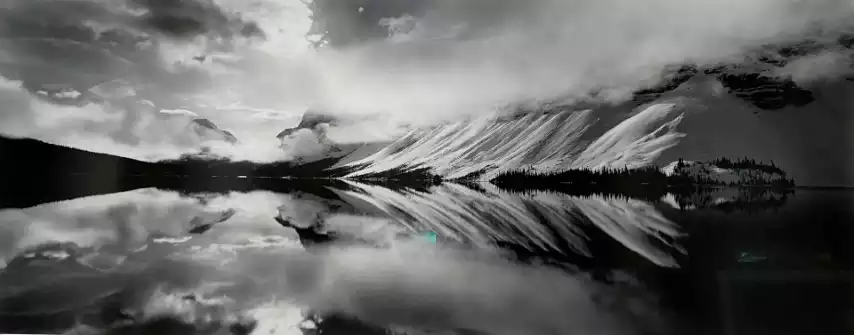
My inspiration to produce these photographs comes from knowing that modern visions and interpretations of time and place supported by historical processes such as platinum printing can produce very compelling imagery as reality is raised to an abstraction. A synthesis of ultra large format 12″x 20″ view camera photography with the platinum print impacts the viewer directly by articulating a vast sweeping narrative . Thus. the imagery itself, the platinum printing process to support this imagery and the technique to capture it on film are combined to produce bold and compelling visual Statements. That one Will want to keep viewing this classic imagery time and time again to relive the Rocky Mountain experience of what was seen and felt by the photographer is the defining characteristic of my work.
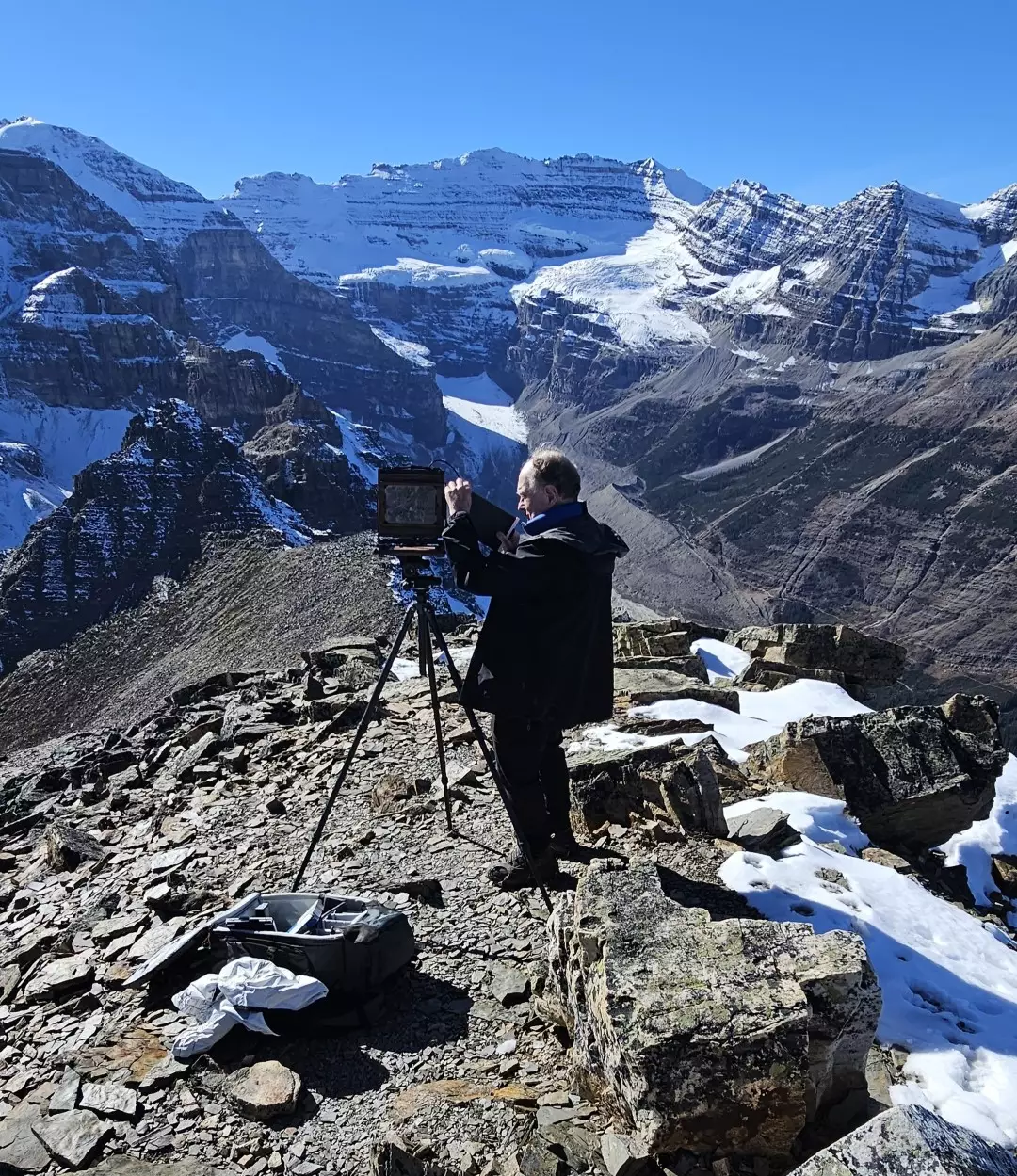
It conveys a sense of three dimensionality, and enables me to convincingly translate the elements of space, water, atmosphere, and land with a delicacy unattainable with any other process. In other words, from the viewer’s perspective, it creates a sense of presence. Images in platinum in some respects resemble the tonality and atmosphere of those late 19th century monochrome images, and the timeless ethereal quality of a platinum print is very much suited to landscapes, architecture and portraiture.
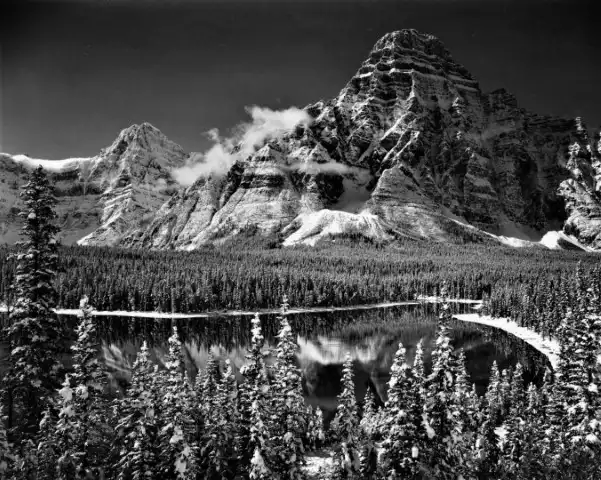

My photographs of the Canadian Rockies have been shown in solo exhibitions in Bangkok, Thailand, the Banff Centre, the Whyte Museum, The Royal Alberta Museum in Edmonton, the Paul Kuhn Gallery in Calgary, and the Canmore Art Guild Gallery in Canmore, Alberta. They can also be found in private and government collections in Canada including the Post Hotel in Lake Louise, Alberta and the Alberta Foundation For The Arts. In December, 2003 1 received a grant from the Alberta Foundation For The Arts for a project entitled ‘The Art of Perception- Alberta’s Heritage In Platinum. I hold a BSc (Chemistry) from the University of Calgary, Calgary, Alberta (November 9, 1973), an MSc (Eng) from Queen’s University, Kingston Ontario (October 30, 1976) and a PhD (Eng) Queen’s University, Kingston Ontario (May 25, 1979).
My preference is to photograph with large format view cameras utilizing sheet films ranging in size from 8×10, 7″x 17″, 8″x 20″ and up to and including the ultra-large 12″x 20″. I chose these formats because Of their exaggerated rectangles, which extend the sweeping narrative of the landscape, and because it most effectively articulates the way I see the world. And, from the viewer’s perspective, it invites a different way of seeing, more like a journey through a new land. The view camera also has the unsurpassed ability to control perspective and capture the greatest amount of detail.
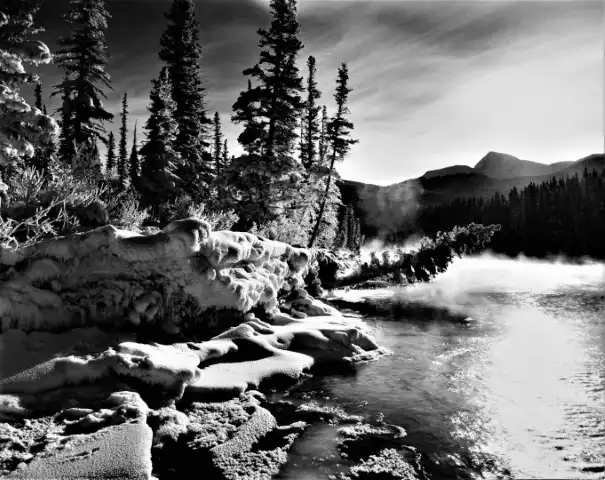
Nature Of My Art
I strive to produce photographic art wherein the print itself is an aesthetic object. Where the medium is simultaneously the message, and the carrier of the message. More so, to recognize the permanence of the camera image and the print itself, and never allowing for the manipulation of either one.
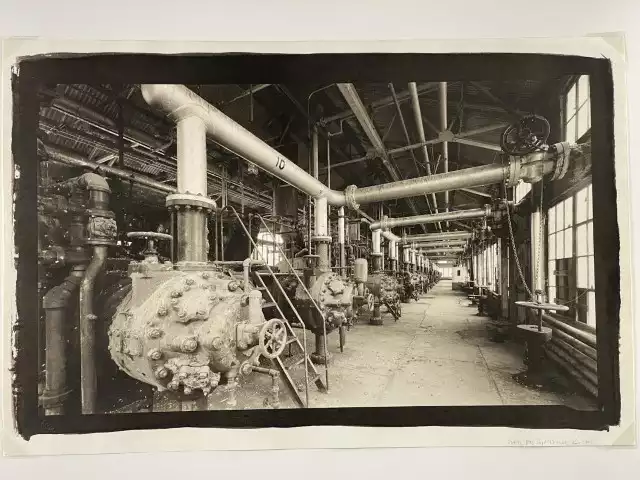
Truth in photography is of paramount importance to me in producing my works of art. In the dark age of digital, this is especially relevant to my photography. Artifacts which are produced in the process of making a negative or print , unless completely egregious (in which case the image or negative is discarded) are never touched up or removed. It is in this respect that I consider myself a practitioner of pure photography.
The platinum print is the most elegant embodiment of all this, and more. The platinum print was invented in 1873 by William Willis and Alfred Clements and involved the use of platinum and/or palladium metal. At the end of the 19th century and early part of the 20th century , the platinum printers called themselves aesthetes or pictorialists and were looking for something closely akin to a painting, but produced as a photograph.
Solutions of platinum and /or palladium salts mixed with a sensitizer and contrast agent are brushed onto a special paper, and in the process the chemistry penetrates into the fibers of the paper and below the surface of the paper. The image therefore sits in as well as on the paper providing the perception of depth and three dimensionality. It’s a contact printing process which requires a negative the size of what you want the print to be and expose under ultraviolet light, using the sun as a source. After exposure, a latent and faint image appears, and when placed in a developer, the platinum salts are reduced to platinum metal and the image appears. It is then treated with dilute hydrochloric acid in three sequential steps to remove the iron salts, washed in running water and placed on screens to dry.
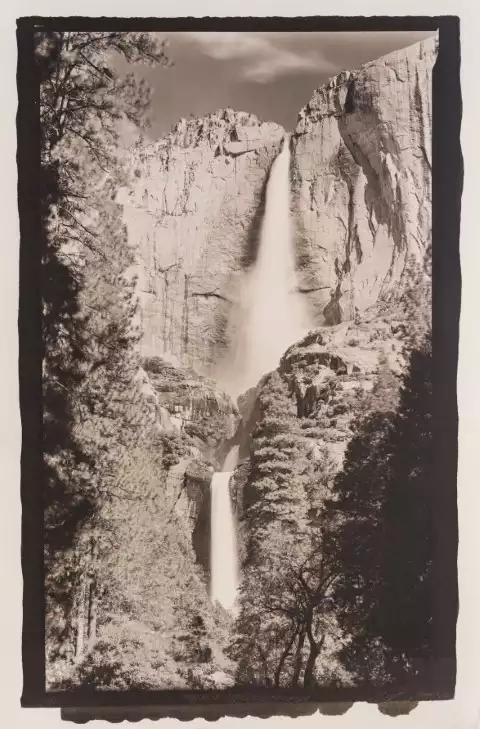
In addition to the perception of depth, the other characteristics a platinum print is known for are the matt finish and very long tonal range, arguably wider than any other process and even greater than that of digital today. The other outstanding characteristic of the platinum print is its archival quality, completely impervious to the effects of any atmospheric pollution, lasting as long as the paper on which it is printed. The platinum print can exhibit a wide range of contrast and tonality, being a function of the mixtures proportion, as well as the nature of the paper itself. The ability to tailor the image in this way to the subject allows for even greater interpretation – and also many trials and tests.
To avoid waste of expensive metal, test strips are used to properly evaluate contrast, tonality and atmosphere. Eventually, a large number of tests strips and reject prints are accumulated. They are never discarded but are burnt, and the metal extracted from the ash by digesting in a mixture of hydrogen peroxide and hydrochloric acid, filtering and evaporating to dryness. The resulting dried mixture of platinum and palladium chloride is re-dissolved in water and the metal precipitated by addition of zinc powder. The recovered metal is filtered , dried, and sold to a refiner.
This is a lot more trouble than most practitioners of the art would go to except for the fact that the price of platinum and especially palladium metal has soared to astronomical levels, as have the platinum and palladium salts. This gives credence to the adage that platinum and palladium printing is indeed a medium for the hopelessly obsessed!
In essence what it comes down to is that at this point the practitioner of the art has abandoned all commercial incentives and pursued the craft of platinum printing purely for the enjoyment of creating an art form quite unlike the ubiquitous digital prints. Like masters of the art in the past, such as Edward Steichen, Laura Gilpin, Irving Penn, Alfred Stieglitz and Frederick Evans who used the platinum print to showcase their best work, the practitioner is driven by a passion working through a tedious and methodical approach fueled by a fierce dedication to produce something extraordinary .
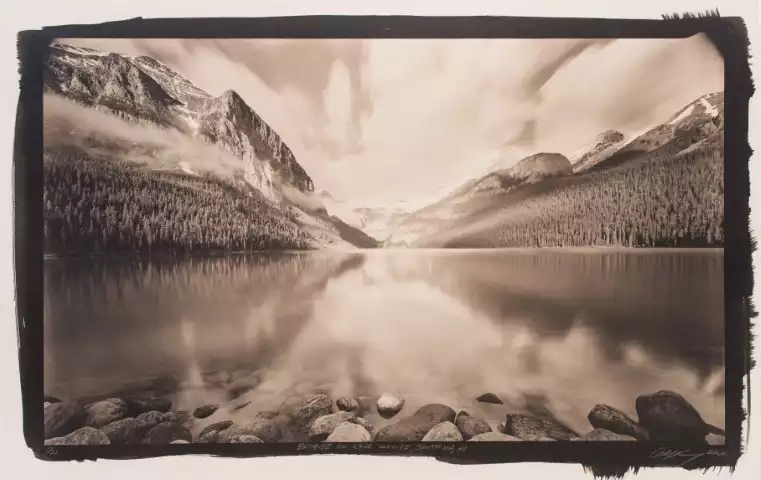
As Irving Penn said : “it is a continuous evolution of experimentation and research” – to which he also added… ” even the mistakes are wonderful ! “
When one goes into the darkroom to begin the process of making a platinum print, one does not know how long it will take. First the negative is studied in detail to evaluate the exposure scale, a process made much easier by Phil Davis’ BTZS methodology to expose and develop the negative. And, using the BTZS System, one has already tested many mixture variations and contrast grades of platinum/palladium paper stock. Now it is essentially a matter of matching the density range of the negative with the exposure scale of the paper. Hence, before even stepping into the darkroom, one has a good idea of which mixtures and contrast agents to use . This is not only a huge time saver, but also minimizes waste and unnecessary testing.
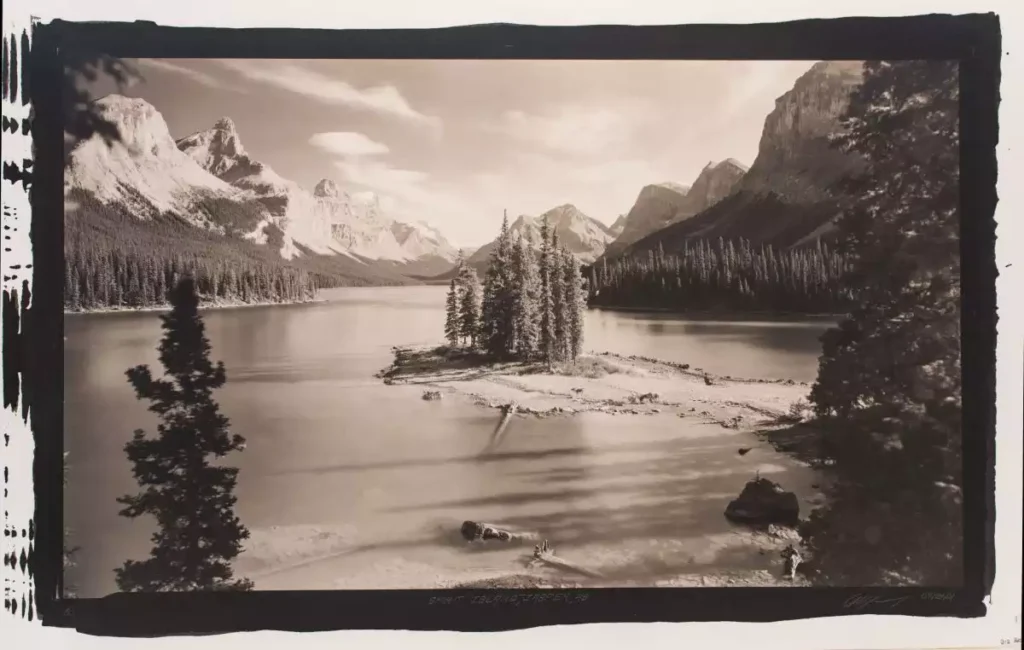
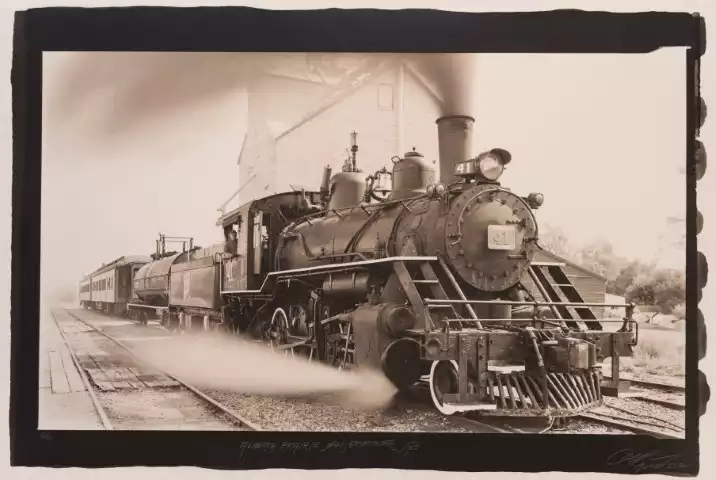
One has a concept, a feeling, an idea of what the end result could look like, and now one disassembles the perception which exists in his mind and reassembles it in the darkroom. Through a series of tests involving different exposure times under a UV source, developers and temperatures, an assortment of paper types, varying ratios of platinum and palladium, are just a few of the variables on the table as the image itself begins to take form. In the end, the result is something that is entirely one’s own unique creation, a vision, translated into a matrix of metal and paper fibers, a completely unique work of art which is something entirely beautiful in, and of itself.
The medium has become the message. It is intense, intimate and original. It motivates the photographer to search even deeper and further for scenes, people, places or objects to photograph. Scenes that through the medium of the platinum print allow for a fuller revelation of the subtleties of photographic tone, texture and detail.
When rendered fully in the platinum print, some scenes appear to exhibit an artist’s luminous glow from within, displaying a broad palette of tones, to the extent that a comparable black and white silver print would appear to be utterly contrasted by comparison.
Beyond that, the perception of depth and three dimensionality present in the platinum print transports the viewer to the vista to where the photographer was standing when the shutter was tripped.
Viewing a well made platinum print truly is a transcendental experience. One need only let the eye wander and explore over and over a scene, in a never ending quest for tones and detail. It is a journey that leads you into the heart and soul of the photographer.
To arrive at this point, the scene had to be visualized, The negative exposed and developed, and the print made. The making of the print itself may take hours, if not days, and in the end the photographer may be just barely satisfied with the result, and has to retire it for a few days or weeks, then revisit it one more time.
It is in this moment that the photographer considers all the dimensions of this creation and scrutinizes it under different light sources, contemplating the spirit of the image, and wondering what it would look like on a different paper, with a different mixture, brush strokes or glass rod. But in the end , one eventually comes to the conclusion that this creation is one of an almost infinite variety of possibilities. However, it has the capability of transmitting or communicating to the viewer what was felt and envisaged by the photographer at the moment the image was exposed to the negative, while sharply depicting the scene or subject as the camera sees it.
Allan W King’s Biography
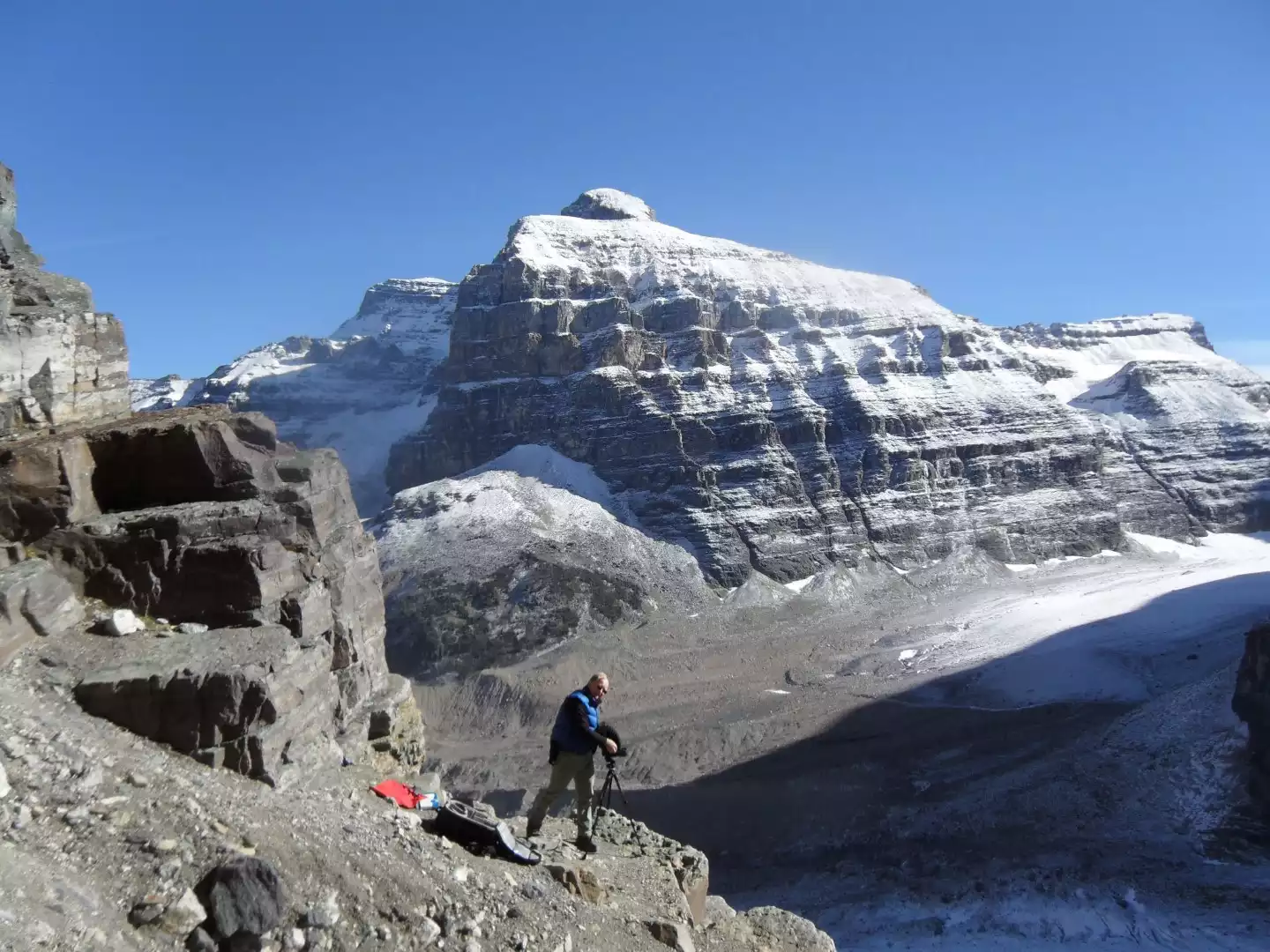
Allan W. King is a professional photographer who crafts classic images in silver gelatin, platinum and color using traditional and antiquarian processes. Following the establishment of his photographic enterprise in Bangkok, Thailand some thirty years ago, Allan pursued corporate/commercial, industrial, portrait, food and fashion photography as well as fine art photography in SE Asia, India and China. Upon settling back into his hometown Calgary, Alberta some twenty fouir years ago, Allan has expanded his portfolios to include much of Western Canadian and South Western United States landscapes.
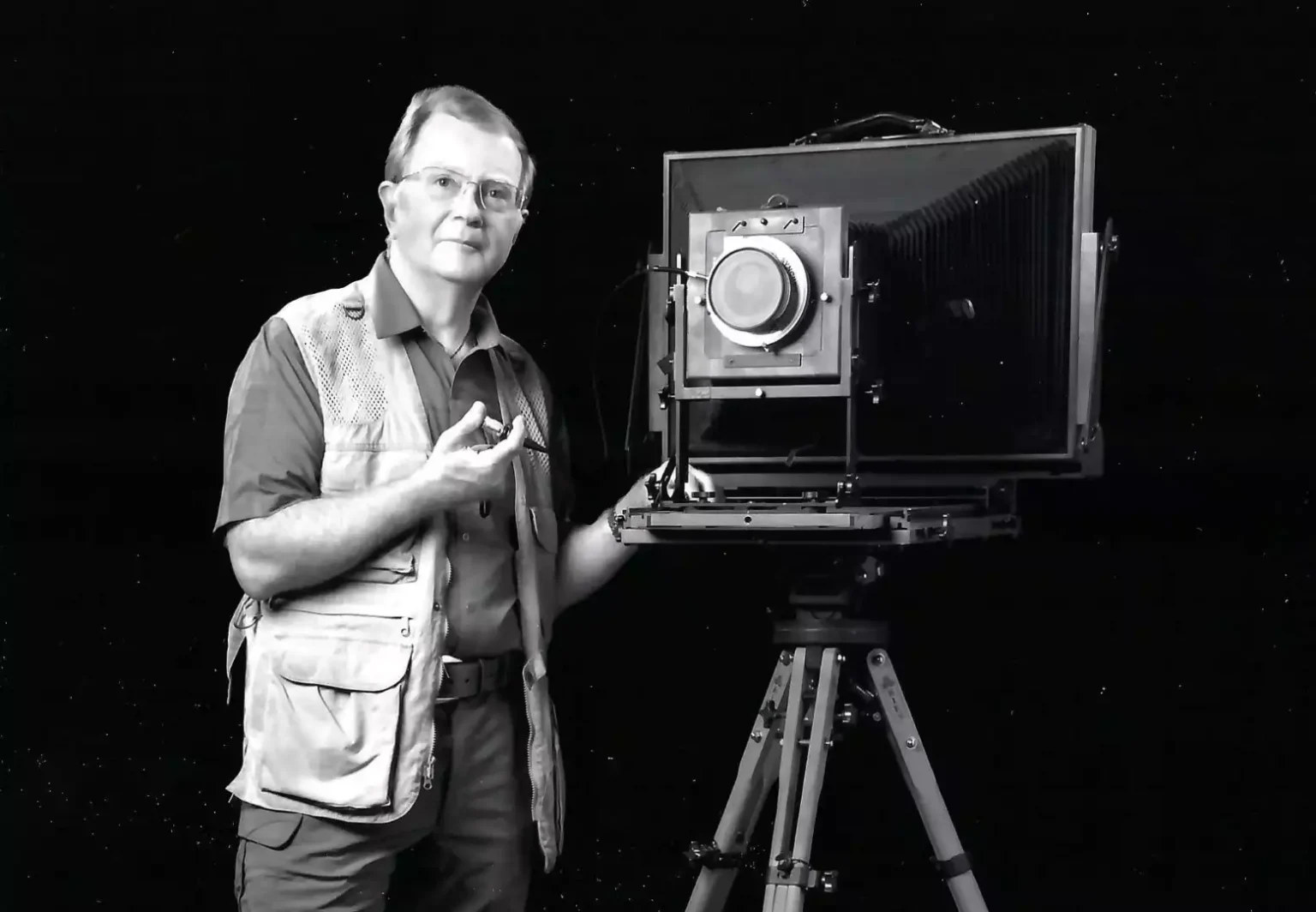
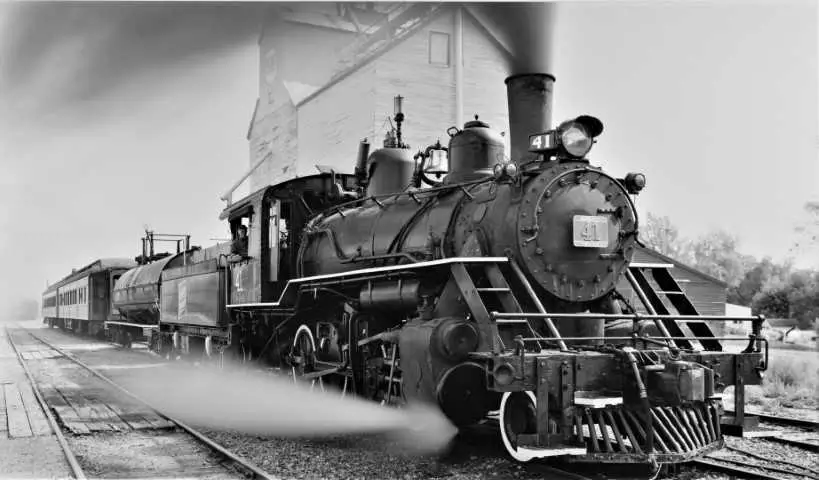
Born in Calgary, Alberta, Allan studied Chemistry at the University of Calgary, where he received his BSc in Chemistry in 1973 before studying at Queen’s University, Kingston, Ontario where he received his MSc in 1976 and PhD in 1979 in Mining Engineering.
Allan had always pursued fine art photography first as a hobby as a young teen and then as a business while studying at university. 1979 proved to be a watershed year for his career when Ansel Adams appeared on the cover of Time Magazine. Displayed inside were his iconic images of Moonrise, Clearing Winter Storm, Half Dome, to name a few. Large format photography from that point on became both a passion and obsession. The works of photographer’s such as Yousef Karsh, Henri Cartier Bresson, Eugene Smith, Elliot Erwitt, Ruth Bernhard, Lois Connor, Paul Caponigro, Paul Strand, Frederick Evans, George Tice and Irving Penn were formative as he developed his way of seeing the world through the lens.

Unusual and difficult photographic projects hold the greatest attraction for Allan, where prior to visiting Angkor in 1992 he undertook an epic 2,400 km journey across Tibet, including base camp Mt. Everest, a journey he has since repeated three times. These experiences helped shape the perception of the reality and unique sensitivity revealed in his photographs which have been shown and exhibited in Bangkok, Tokyo, Vienna, and Canada, and included such notable persons as HRH The King and Queen of Thailand, HH The XIV Dalai Lama, Austria’s Heinrich Harrer, Otto Schenk, Arik Brauer, Kotas Heldenberg and Alberta’s own Andy Russell. His highly successful exhibitions during this period included Angkor, Tibet, Canada’s Rocky Mountains, and the changing cultures of Burma, Laos and Thailand’s mountain peoples.
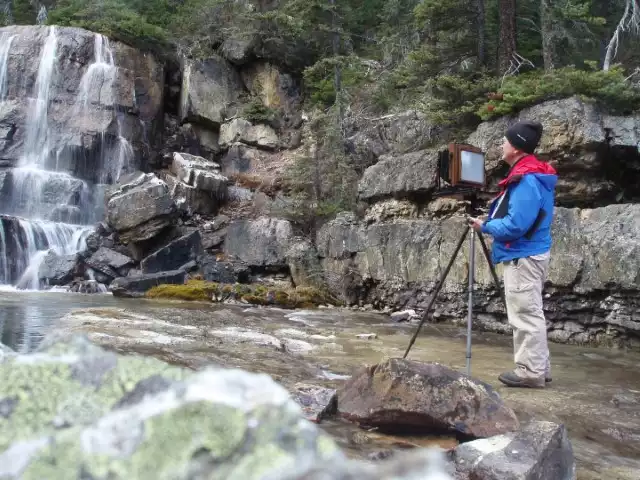
Frederick Evan’s platinum prints of cathedrals in England and Wales proved to be especially inspiring, and it was the platinum print in particular which became for Allan THE medium to showcase his best work, as it’s tonality, depth and historical feel are unsurpassed by any medium. Irving Penn once said compared to the ubiquitous black and white print, printing in platinum is like adding another dozen keys to a piano’s keyboard, while striking all the keys with greater nuance.
Photography with a 30 pound ultra large format 12X20 view camera soon became Allan’s signature camera because of its ability to articulate a sweeping narrative within the “Golden Rectangle. These large format images in platinum and silver are remarkable for their detail and unusual size, and reflect a dedication to the craft of traditional print making.
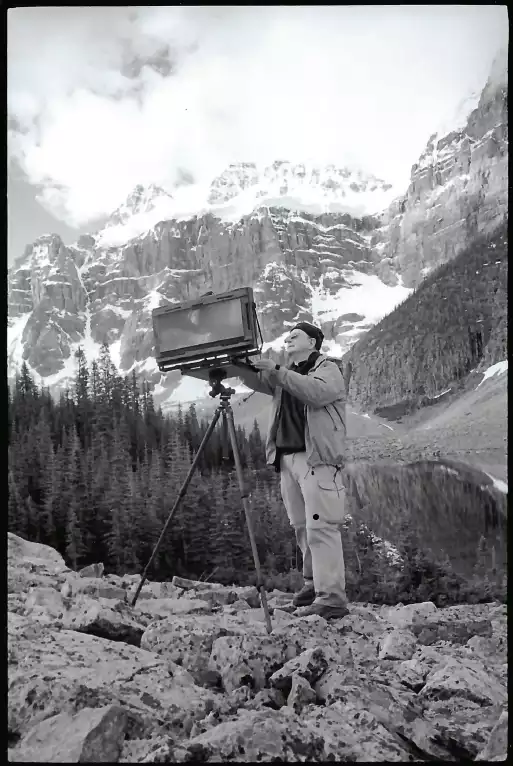
Allan eventually met Phil Davis in 1999 and under his tutelage studied advanced printing techniques at his studio in Ann Arbor, Michigan. His mentor on black and white printing and the BTZS film development technique for many years, Allan remained in contact with Phil up to his death in 2007. Both Phil Davis and Ansel Adams believed that before you can be a good photographer you must be a good printer, for only then can you fully appreciate the subtle interplay and gradation of tones which constitute an image, and how to match the density range of a negative with the possible exposure scales of the paper to create these tones.
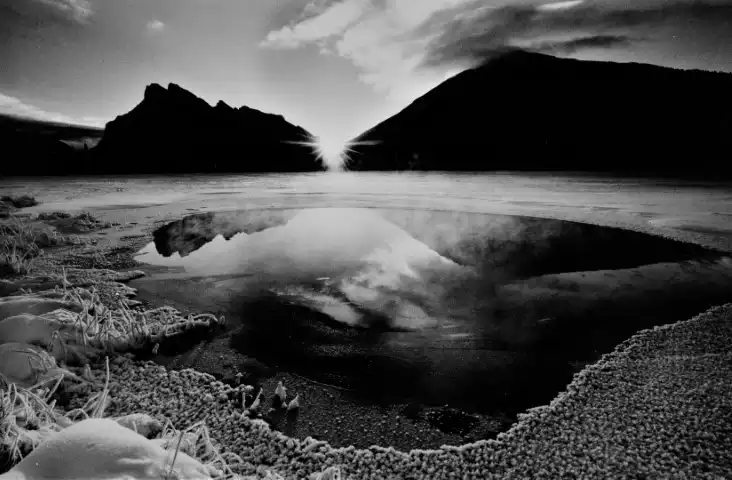
Sunrise On Lake Louise
Banff National Park, Alberta, June 26, 2001
Copyright Allan W King
While travelling the Icefields Parkway early in the morning, after seeing the calm nature of the water’s surface at Herbert Lake, I rushed to see what the water’s surface at Lake Louise would be like. It was about 6 o’clock in the morning and the surface of the water was like a mirror. There was a rapidly moving bank of clouds heading north over Victoria Glacier, a rare occurrence, with a finger of fog drifting through the trees and a shaft of light illuminating the trees and fog along the edge of the lake. The slow shutter speed of 22 seconds gave the clouds the appearance that they were rushing towards us at incredible speed, and all the elements of the composition combined to give a very dramatic light on the lake. The ultra-wide angle 210 mm lens brought the stones in the foreground into sharp focus , providing unity and depth to the image.” This signature piece, ‘Sunrise on Lake Louise‘ is in the permanent collection at the Whyte Museum in Banff , Alberta. To have one’s work in this collection is certainly a great honor.
Solo Exhibitions
- Bangkok, Thailand; Landmark Hotel; Twilight At Angkor: November 1991
- Bangkok, Thailand; ISETAN ; Canadian Wilderness Images: April 1997
- Banff Alberta, Whyte Museum: Platinum Images of Tibet; October 12, 2001- January 16, 2002
- Edmonton, AB, McMullin Gallery: Places Of Spirit- Images in Platinum: August 26-October 21, 2002
- Calgary, AB, Paul Khun Gallery: Allan W. King: Selected Works In Platinum: Sept 14-Oct 4, 2002
- Banff AB, Banff Centre: Mountain Peoples Of South East Asia- Images In Platinum: Nov 24, 2002-April 14, 2003
- Calgary AB, Devonian Gardens Gallery: The Art Of Perception Landscapes in Platinum: Oct 1- 30, 2003
- Calgary AB, Collins Barrow: Selected Works In Platinum & Silver : November 8-28, 2003
- Calgary AB, Sun Life Plaza: Platinum Landscapes Of Western Canada & South West USA: Jan 9-Feb 29 2004
- Edmonton AB, Visual Arts Association Of Alberta Gallery: Platinum Perceptions: May 6- June 12, 2004
- Edmonton, AB, Royal Alberta Museum,: Timeless Beauty of Platinum: November 3, 2006 – January 18, 2007
- Calgary AB, Sun Life Plaza: Selected Works In Platinum: April 3 -May 18, 2015
- Calgary, AB, Scotia Centre Office Tower Lobby: A Visual Journey Through The Canadian Rockies: December 15, 2014 – June 15, 2015 [A collection of ten 1 meter X 2 meter silver gelatin enlargements]
- Calgary, AB, Scotia Centre Office Tower Lobby: Canada’s Magnificent Landscapes: June 15, 2015 – December 15, 2015 [ A collection of ten 1 meter X 2 meter silver gelatin enlargements]
- Canmore Art Guild Gallery, Canmore, AB; Allan King…Platinum Photographs; November 14-24, 2015;
- Canmore Art Guild Gallery,Canmore,AB; Rocky Mountain Panoramas – The Black and White Photography of Allan King; April 29 – May 9, 2017;
- Banff, AB; Whyte Museum; Spring Exhibitions; Sunrise On Lake Louise 36″X60″ Silver Gelatin; April – September, 2017.
Group Exhibitions
- Whyte Museum, Banff, AB: Exposure 2006 – Alternative Photographic Processes: January 14 – April 16, 2006 [ Platinum prints of the Canadian Rockies]
- Edmonton Art Gallery ; As part of Alberta’s 2005 Centennial Celebrations, The Edmonton Art Gallery held a Travelling Exhibition (TREX) of Allan King’s 12X20 platinum works along with 5 other photographers. Entitled “Camera In Hand”, this exhibition travelled throughout Alberta until September, 2007.
- Canmore Art Guild Gallery, Canmore, Alberta : Exposure 2015 – The Portrait: January 31 – February 17, 2015 [ Silver gelatin Enlargements of Heinrich Harrer and HH The XIV Dalai Lama of Tibet.]
- Canmore Art Guild Gallery, Canmore, Alberta ; Group Show: March 21 – April 17, 2015 [ Two 1 meter X 2 meter silver gelatin enlargements of Canada’s and US landscapes.]
- Christine Klassen Gallery, Calgary, AB; Exposure 2022 -January 29 – February 27, 2022; [ Sunrise On Lake Louise; 36″ X 60″ Silver Gelatin ]
Works Held in Collections
- Leicashop, Vienna, Austria; October, 1999; 1 8″ X 20″ platinum print of Castle Mountain, Banff National Park, Alberta
- Alberta Foundation For The Arts, Edmonton AB; April 2001: 3 12”x20” Platinum Prints (Landscapes of SW US)
- Post Hotel, Lake Louise AB; December 2002: 10 12×20” Platinum Prints (Landscapes Of The Canadian Rockies)
• Alberta Foundation For The Arts, Edmonton AB; October 2003; 1 12”x 20” Platinum Print (Goess Brewery, Leoben, Austria) - Whyte Museum, Banff, AB; May 10, 2017; 36″ X 60″ Silver Gelatin; Edition # 3/7; Sunrise On Lake Louise, Banff N.P , AB



